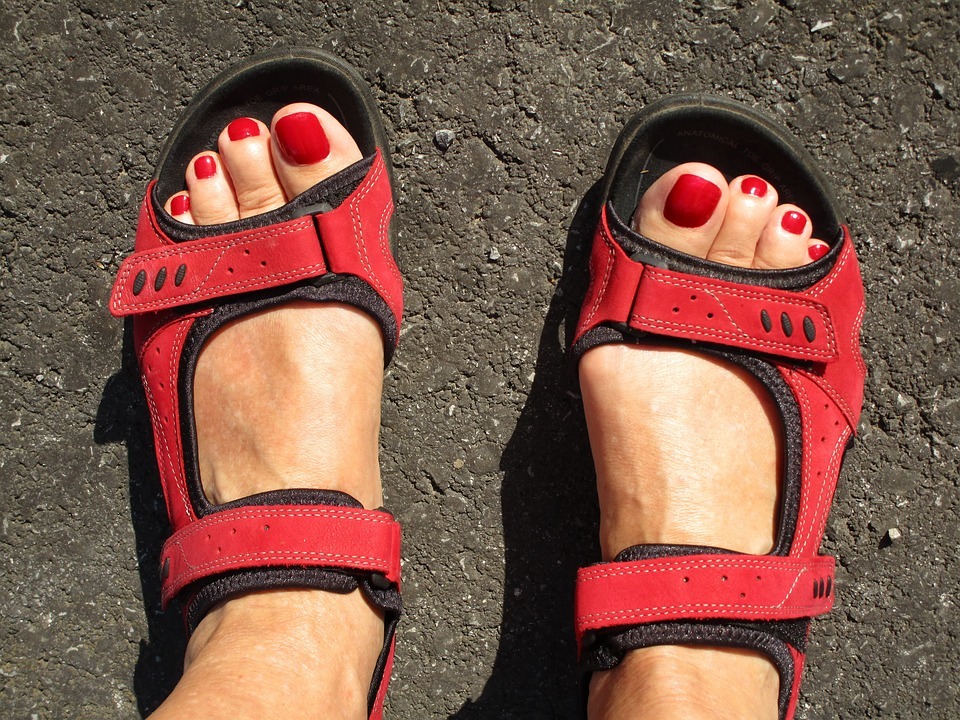If one of your foot joints has grown over time, you probably don’t know which shoes to wear with best bunion sandal. This is one of the most frequent problems in the feet, causing discomfort when putting on shoes, pain and difficulties in adapting a shoe to a foot with a different shape than usual.
What Shoes to use with Bunion: Tricks to Choose the Best
There are different tricks and recommendations so that choosing a shoe that suits your bunion is not an odyssey. This usually forms in the big toe, causing it to swell and displacement of the rest of the toes. That is, it completely changes the morphology of your foot. What to do then to put on shoes?
Stay Away from Heeled Shoes
This type of footwear is your enemy if you have bunions. The heel involves the toes squashing and coming together, speeding up the bunion formation process. This occurs even when the front of the shoe is open.
If due to a formal event you have no alternative to heels, try to wear them as little as possible and include a non-slip insole, to prevent the foot from slipping forward.
Leather Shoes Fit Better to your Foot
Choose an elastic and good quality material when choosing your shoes, it will make a big difference in the discomfort you will feel in your bunion. The skin is a good ally:
It allows the shoe to better adapt to the shape of your foot in a natural way and that it can breathe.It is a material that adapts without deforming.
At the other end of the scale, one of the least recommended materials is patent leather, since it is not flexible at all and causes friction.
The Wide Waist Helps You Walk Comfortably
By wide-fit footwear, we mean shoes that have a special width. It is not a question, in any case, of buying a size larger than yours, since that will only worsen the condition of your bunion and, in addition, it will cause chafing, you can buy them from our store theyoury.com.
Wide-fit footwear has a wider aesthetic than usual and usually has a square shape, so that the toes can be comfortably inside the shoe. This feature should be complemented with a flexible sole.
If you use a prosthesis to correct the bunion, you will have to take this into account to choose a shoe with enough space for said prosthesis. In a shoe store they can help you with that issue, making the area of the shoe where the prosthesis would go wider. This does not have to affect the exterior aesthetics of the footwear too much, although it will be slightly noticeable.
Sandals with thin Strips will Cause you Scratches
If the straps on the sandals are wide and do not squeeze the front of your foot, you can walk comfortably in them. However, if it is very thin and narrow strips, in inflexible materials, they will irritate the bunion area, causing more pain.
Choose solutions to improve the state of your juanete
If you are not thinking about having your bunion operated on, you may want to opt for solutions that help you improve its condition. In addition to the prosthesis that we mentioned before, there are:
- Silicone protectors
- Toe separators that will make walking more comfortable
- Bet on insoles that do not distort your footprint
- Wear anatomical shoes whenever possible
With these solutions, you will prevent rubbing between the toes, which can lead to injuries.
By following these tips, we hope that it will be easier for you to choose a suitable shoe if you have bunions. By avoiding heels and opting for wide, anatomical shoes with a flexible sole, you will be betting on improving your bunion. You don’t have to give up on aesthetics, so ask your trusted shoemaker how to increase the width of your favorite shoe.

